Heading 1
Heading 2
Heading 3
Heading 4
Heading 5
Heading 6
Lorem ipsum dolor sit amet, consectetur adipiscing elit, sed do eiusmod tempor incididunt ut labore et dolore magna aliqua. Ut enim ad minim veniam, quis nostrud exercitation ullamco laboris nisi ut aliquip ex ea commodo consequat. Duis aute irure dolor in reprehenderit in voluptate velit esse cillum dolore eu fugiat nulla pariatur.
Block quote
Ordered list
- Item 1
- Item 2
- Item 3
Unordered list
- Item A
- Item B
- Item C
Bold text
Emphasis
Superscript
Subscript
Introduction
The aim of this project is to gain insights into how users perceive the cybersecurity aspect of a smart object called Wrable. The ultimate goal is to build a website that will address users' perceptions of cybersecurity to persuade them to 1) purchase the smart object and 2) take cybersecurity measures.
Our research has allowed us to identify two main personas:
1) The Web Searchers - users who avoid using smart objects because they are concerned about their privacy and cybersecurity
2) The Web Surfers - users who are enthusiastic about using smart objects but are not willing to take security measures.
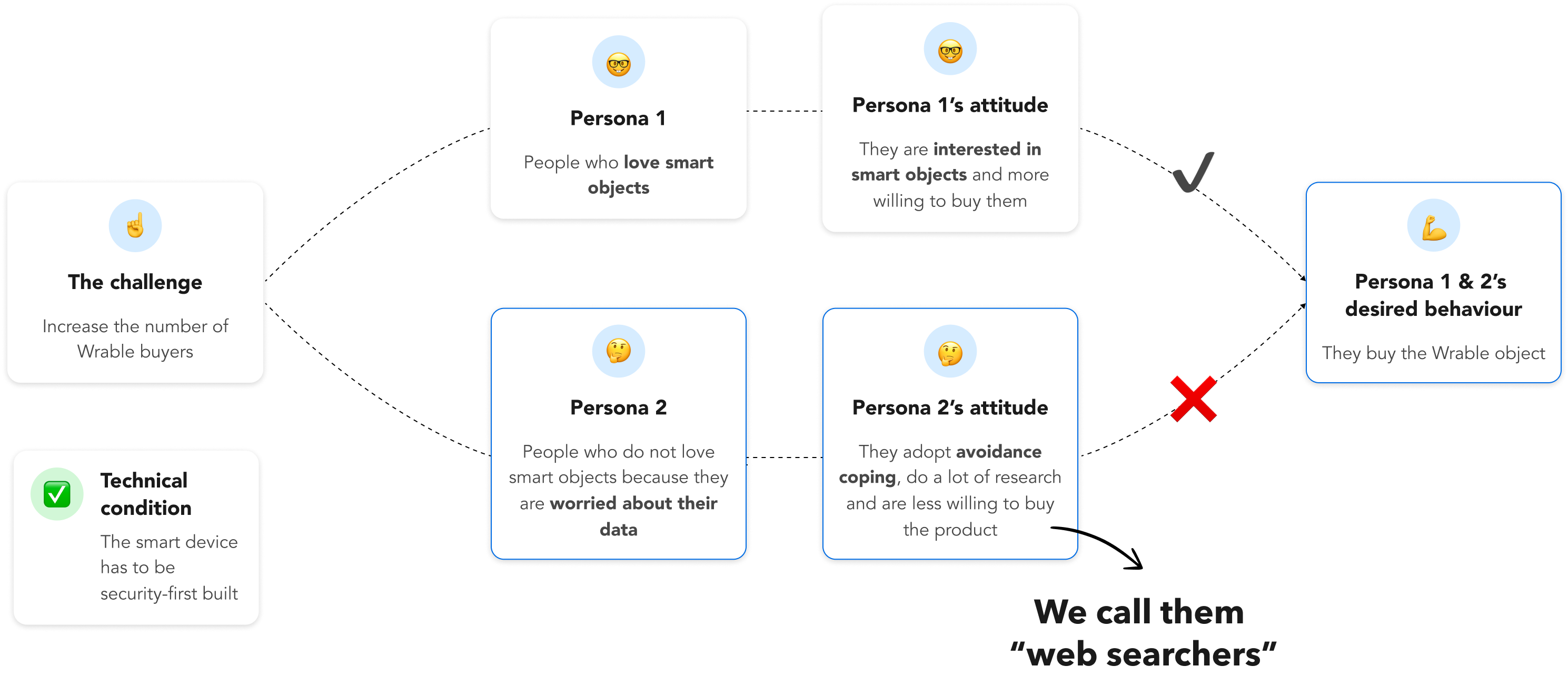
Because these two audiences have different levels of interest in the smart object, they may respond differently to cybersecurity messages. This can be explained by the Elaboration Likelihood Model (ELM) of persuasion, a dual process theory that describes how attitudes can be changed. According to this theory, when a person has a high level of interest in a subject, they will pay close attention to the details and copy presented. However, when the user has a lower level of interest, they will focus more on the visual cues and overall appearance of the website where the information is presented.
With this in mind, I can tailor my approach to change the attitudes of different personas and encourage them to adopt new behaviors.
.jpeg)
Methodology
To gain insights into how our personas perceive cybersecurity measures, I utilized Eyetracking and Facereading technologies. Eyetracking measures where the viewer's gaze is focused, while Facereading provides accurate and reliable data on facial expressions. Both techniques were then combined with Retrospective Think Aloud (RTA), which uses a replay of gaze video as a visual cue during a qualitative interview.
Hypothesis: The hypothesis I tested was whether websearchers are more inclined to take the central path to process the message. This hypothesis was tested using 13 sub-hypotheses, all based on the scanning preferences of users regarding details versus visual cues.
Metrics: To validate the hypotheses, I used the following metrics from Eyetracking:
- The number of users who looked at the studied area
- The time of fixation
- Gaze path, including direction and angle
And we measured the feelings through the facereading.
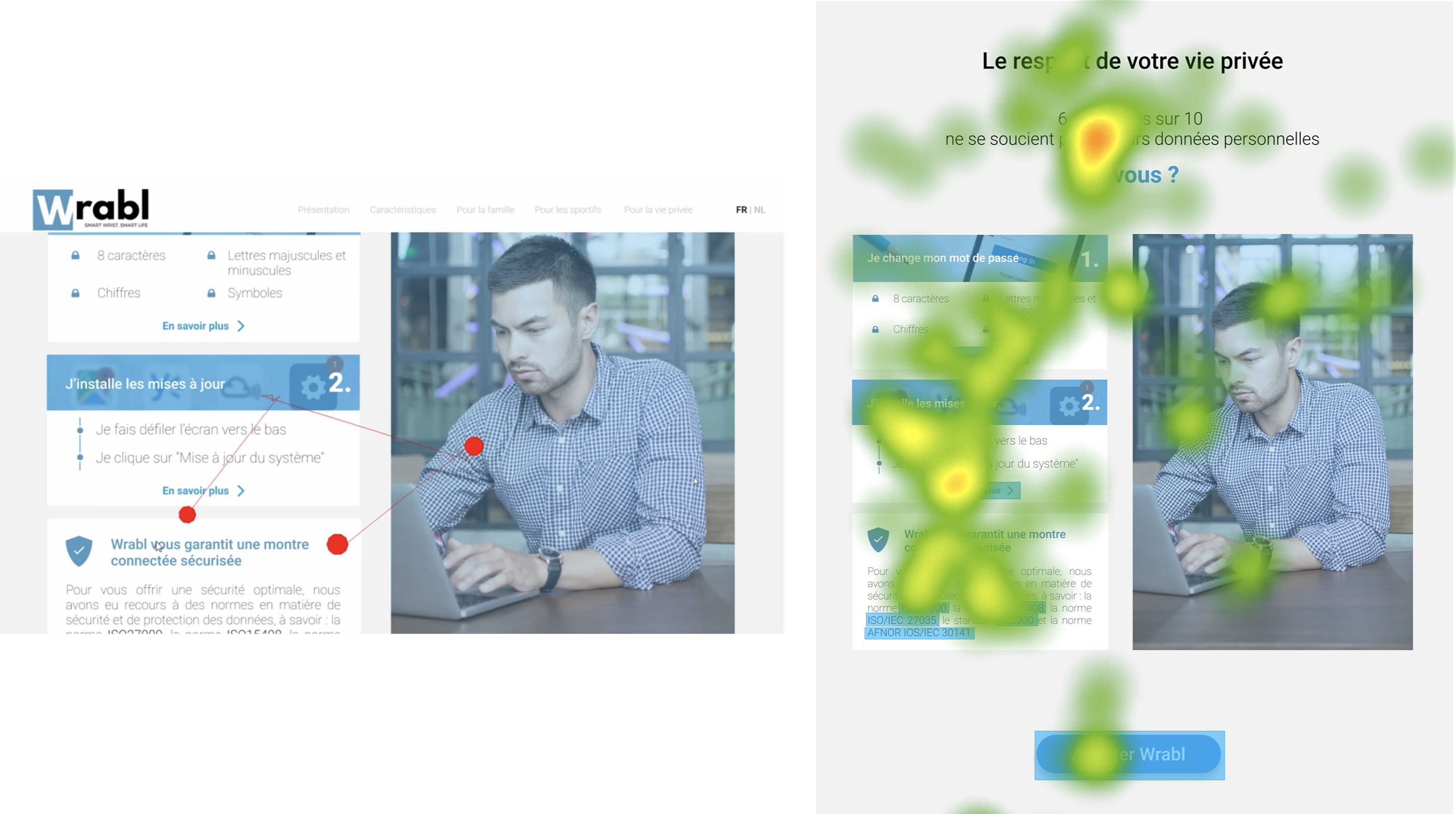
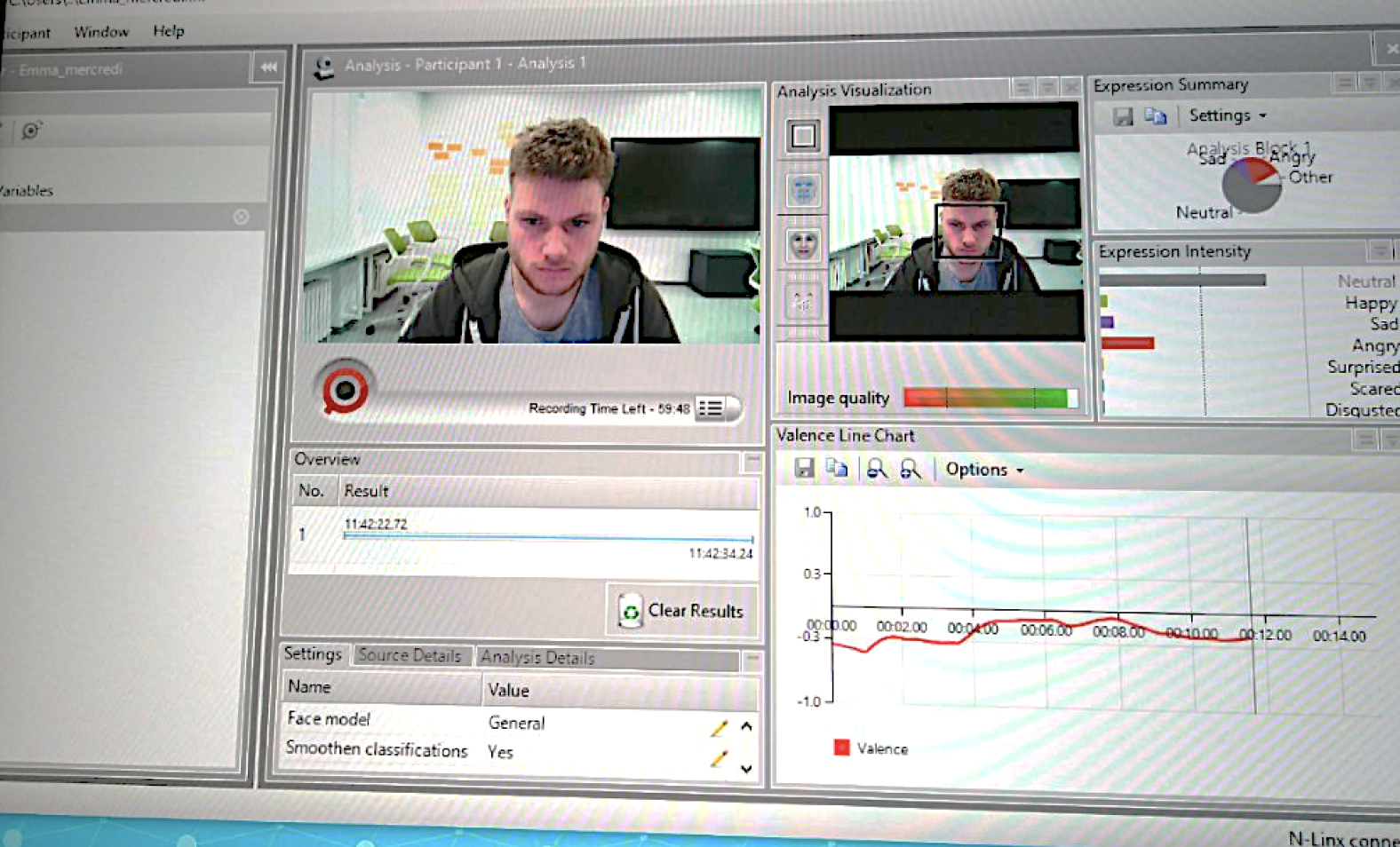
Prototype
To test the hypotheses, I created a website prototype of the Wrabl smartwatch. To avoid bias, the entire website was tested, but only the red section was analyzed.
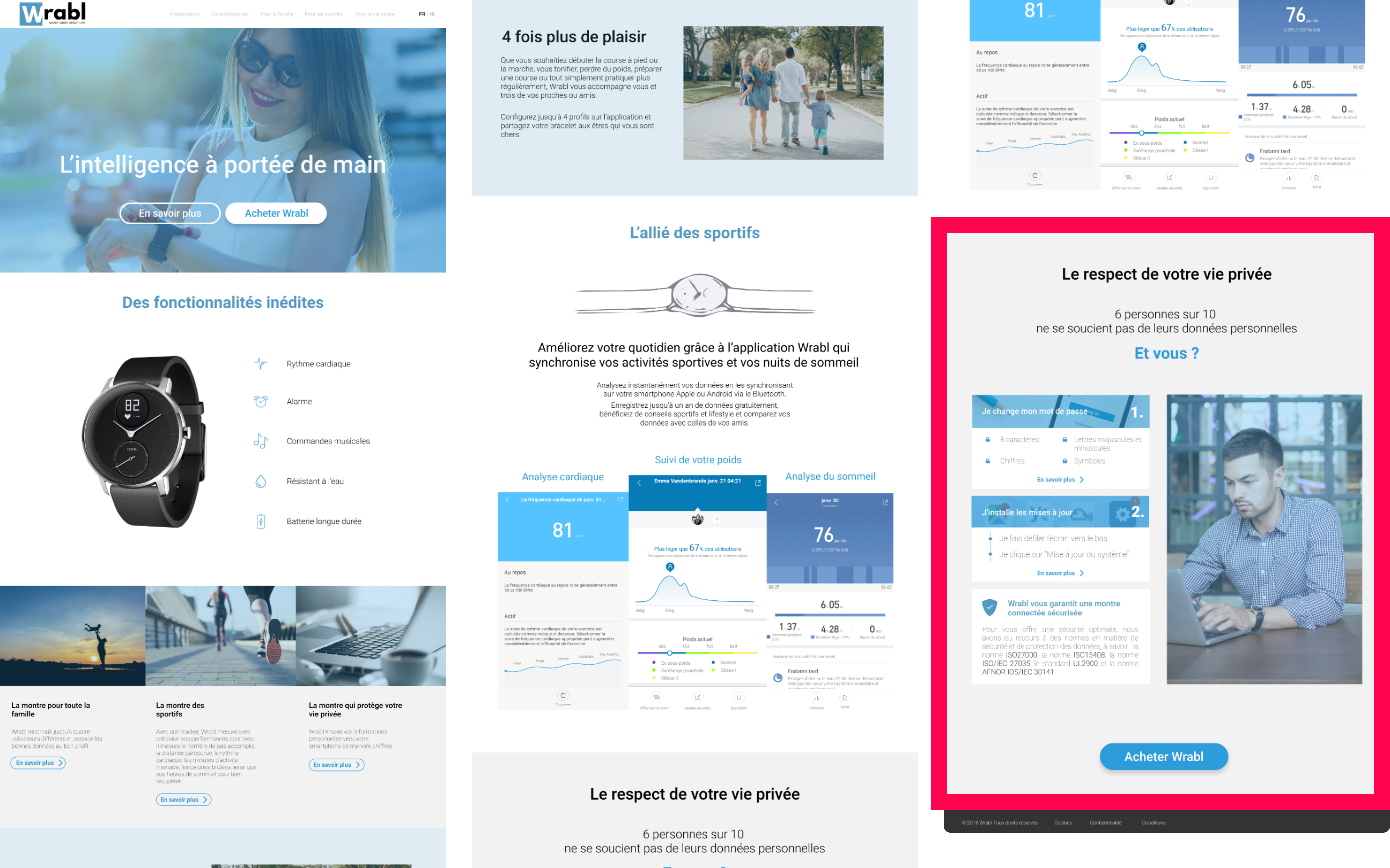
Findings
The combination of quantitative methods (eyetracking and facereading) and qualitative methods (retrospective think aloud) provided valuable insights that enabled me to improve my designs and better align them with the needs of the users.
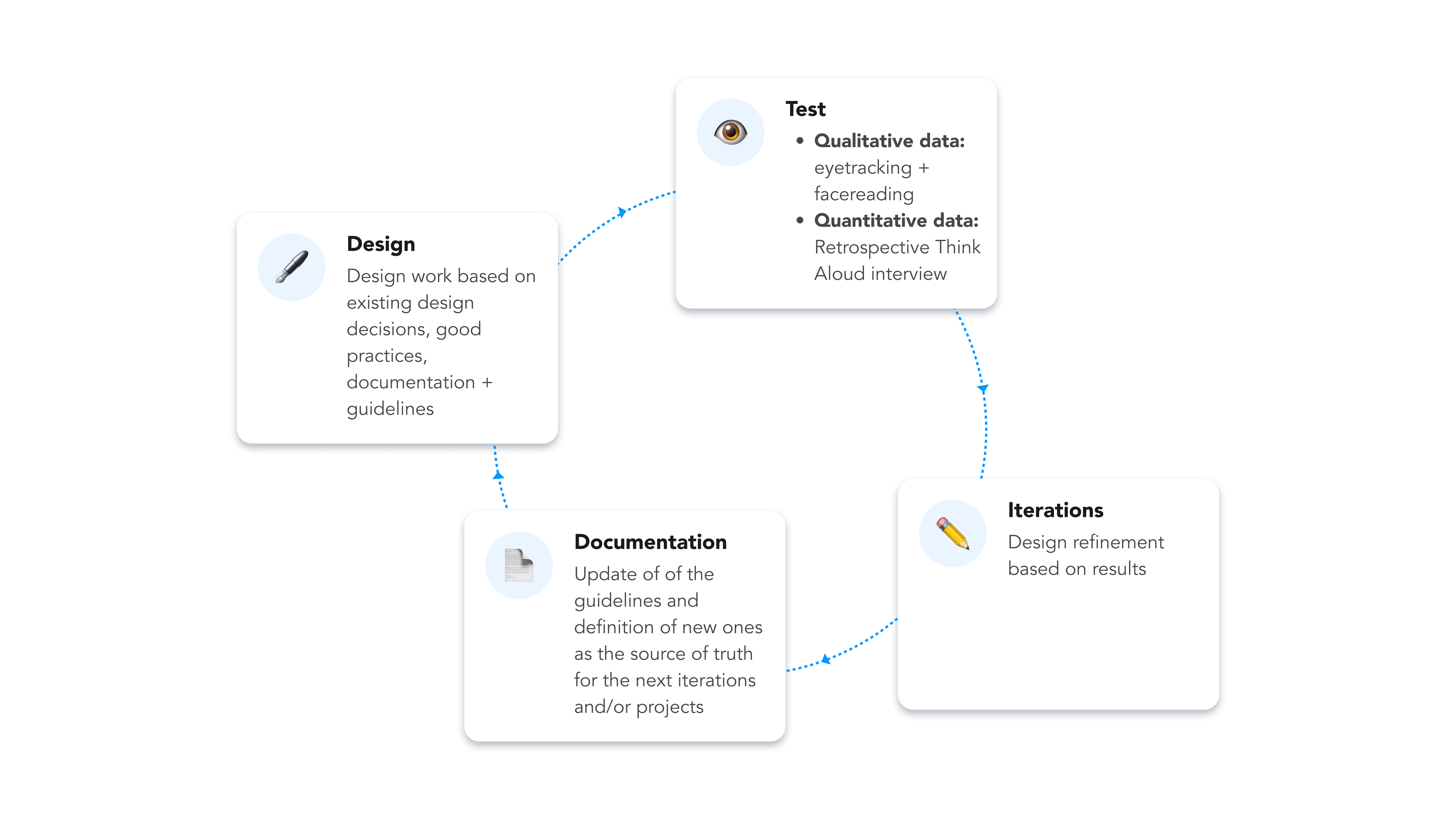
Among the changes I changed, I, for example, divided the large picture into two. I also added some icons to the buttons to add more context to users and remove the background image from the header of the boxes to increase the accessibility.
.png)
Conclusion
The design changes informed by user research resulted in increased user satisfaction and a higher net conversion rate on the website. However, to determine whether these changes would indeed encourage users to take more cybersecurity measures, further research is needed.
Regardless, user research was a crucial step in making these website changes. It allowed me to gather valuable insights about our two personas, including their attitudes and behaviors, which informed my design decisions.
It's worth noting that user research is an ongoing process and that continuous feedback from users is essential for iterative design improvements.